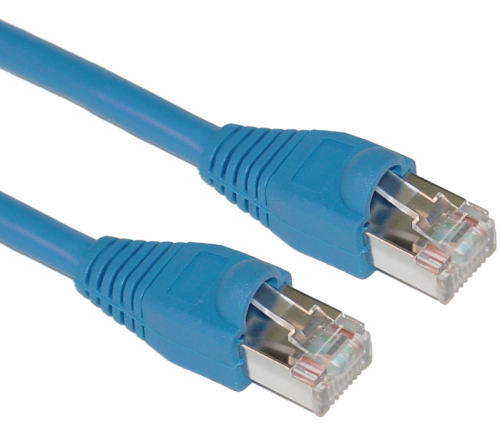A customer came to us recently with a question. They looked at this box of cable, and then this one. One is a lot more expensive than the other, and they wanted to know why. I thought it was a good subject for a tutorial. I’ve covered this topic before when it comes to coax cable, but this is the first time I’ll be discussing category cables.
First, a little bit about category cables.
“Category cables,” or Ethernet cables as most people call them, were an evolution of the cabling systems used for old business phone systems. In the 1980s, companies wanted to network their computers, but for the most part it was too expensive. You needed a lot of coaxial cable and a lot of special installation techniques that weren’t very common back then. The idea was that most businesses had a lot of what they called “twisted pair” cables running through walls already. These are really thin wires that generally all come together in a single point. They’re much cheaper than big copper wires and easier to install.
The current standards for these cables are know as Category 5E and Category 6. In most cases you can use either because the only difference is that Category 6 can carry faster traffic. That may seem appealing, but Category 5E can already carry traffic that’s 10 times faster than anything you have in your home or business.
Looking at those two cables
If you look at those listings, you’ll see one is listed as riser cable, and the wires within it are copper-clad aluminum. While it doesn’t specifically say so, the other cable has cables made of solid copper. The performance of these cables is very similar in the real world. The copper-clad aluminum cable is cheaper, because aluminum is cheaper than copper. In fact it’s a LOT cheaper. So why would you ever use solid copper? In order to understand we need to take just one more step back to see why copper-clad aluminum works at all.
When signals go down a wire, they stay on the outside of the wire. Really just the outer few ten-thousands of an inch do the work and the rest of the wire is just there to provide support and stability for that thin skin. This is called “the skin effect.”
Signals do have a very tiny amount of electrical current behind them, but it’s not enough to actually power anything. When you put enough current down a wire to actually power something, that current travels through the whole wire, not just the skin. This is when you will need to know that you have solid copper. Copper carries electricity much better than aluminum, and that means that if you use aluminum, there might not be enough current running through the wire to power anything.
OK now to the heart of the matter
You can use copper-clad aluminum for the space between floors, and for the conduits that go from floor to floor. These conduits are also called risers. However, you always want to use solid copper for longer runs from a master closet to individual locations. Solid copper lines will perform better over great distances. You may not think that the cable distances are too long, but keep in mind that cables in the ceiling probably don’t go from point to point. An office that is only 25 feet from the master closet could take a 100-foot run.
Also, there are cases where you do want to power things over Ethernet. A perfect example is security cameras, which often run on the same network cable as computers but require a 48 volt power source. Devices that don’t need power are designed to block that power, so it’s perfectly safe to do it that way. However, if your cabling isn’t up to the task because it is mostly made of aluminum, you’ll have to rewire a lot of your physical plant to fix that. You can sometimes know that a cable isn’t solid copper from the writing on the outside, but sometimes not. Sometimes the only way to know is to slice one open. When that happens, you lose the use of an otherwise good cable.
Get the network cables you want from Solid Signal
SolidSignal.com is your home for networking cables and so much more. We have all the pro-grade tools you’ll need to get the job done, no matter what the job is. We also carry a lot of the specialty equipment that you may need. You won’t find that stuff anywhere else. Shop at Solid Signal to find thousands of hard-to-find parts. If you’re having trouble finding what you need, call us! We have a staff full of tech experts ready to help you. Call 888-233-7563 during East Coast business hours. If it’s after hours, fill out the form below. We’ll get back to you as soon as we can!





